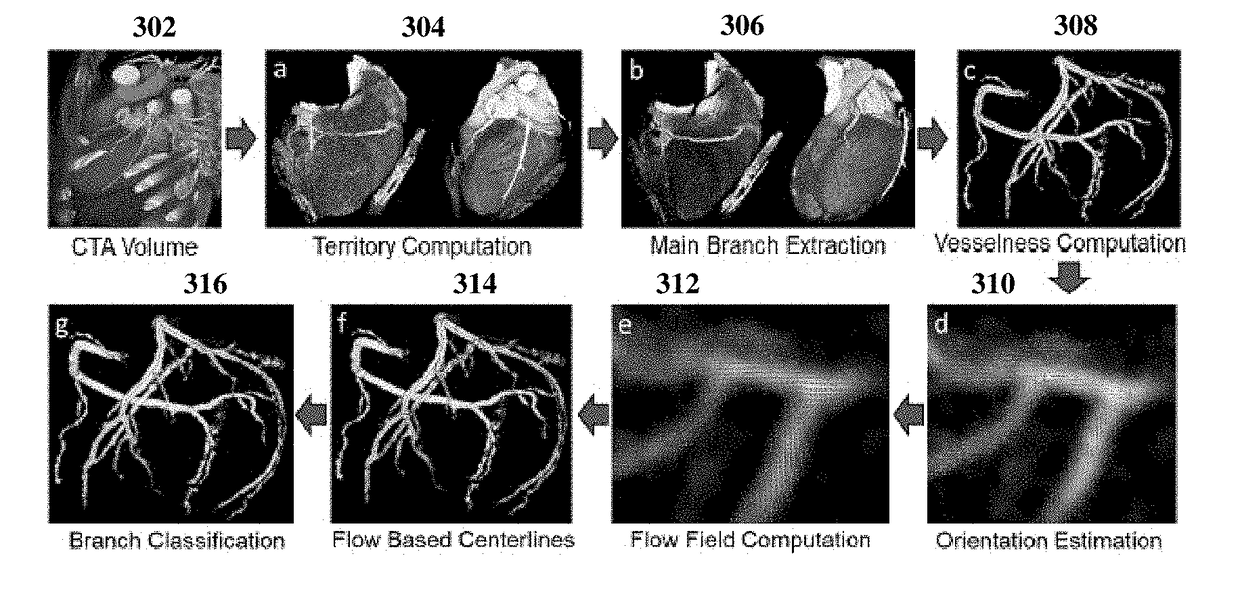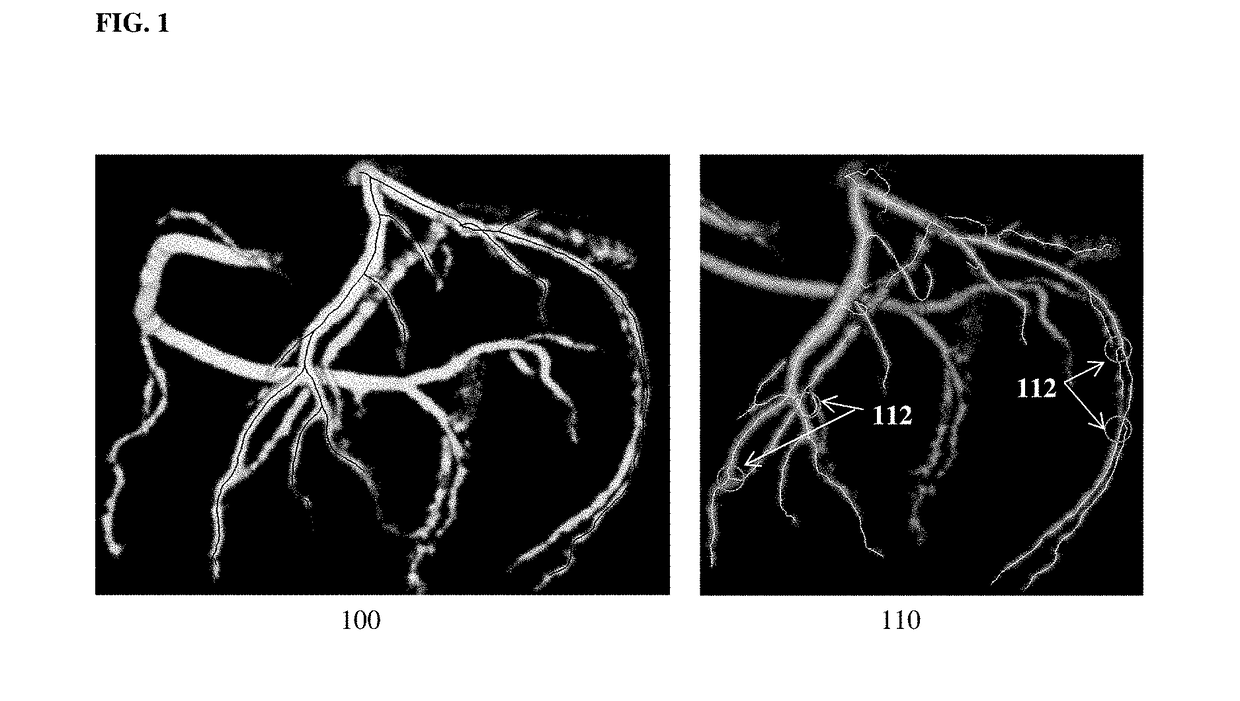Method and System for Extracting Centerline Representation of Vascular Structures in Medical Images Via Optimal Paths in Computational Flow Fields
a technology of centerline representation and flow field, applied in image enhancement, instruments, angiography, etc., can solve the problem that the segmentation of coronary arteries is not an easy task, and achieve the effect of maximizing the flow carried
- Summary
- Abstract
- Description
- Claims
- Application Information
AI Technical Summary
Benefits of technology
Problems solved by technology
Method used
Image
Examples
Embodiment Construction
[0023]The present invention relates to a method and system for extracting centerlines of vascular structures in medical images via optimal paths in computational flow fields. Embodiments of the present invention are described herein to give a visual understanding of the vascular centerline extraction method. A digital image is often composed of digital representations of one or more objects (or shapes). The digital representation of an object is often described herein in terms of identifying and manipulating the objects. Such manipulations are virtual manipulations accomplished in the memory or other circuitry / hardware of a computer system. Accordingly, is to be understood that embodiments of the present invention may be performed within a computer system using data stored within the computer system.
[0024]Coronary arteries constitute only a small portion of a large CTA volume because of their thin and longitudinal geometry. The extraction of coronary artery centerlines is challengin...
PUM
 Login to View More
Login to View More Abstract
Description
Claims
Application Information
 Login to View More
Login to View More - R&D
- Intellectual Property
- Life Sciences
- Materials
- Tech Scout
- Unparalleled Data Quality
- Higher Quality Content
- 60% Fewer Hallucinations
Browse by: Latest US Patents, China's latest patents, Technical Efficacy Thesaurus, Application Domain, Technology Topic, Popular Technical Reports.
© 2025 PatSnap. All rights reserved.Legal|Privacy policy|Modern Slavery Act Transparency Statement|Sitemap|About US| Contact US: help@patsnap.com



